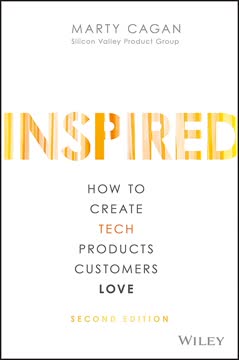Key Takeaways
1. Search is a Wicked Problem Demanding Innovation
Time and again, the future of search is invented beyond the borders of its category.
Search is complex. Search isn't a solved problem; it's a "wicked problem" characterized by uncertainty, complex interdependencies, and ever-changing requirements. This complexity stems from the diverse goals of stakeholders, incomplete information, and the dynamic nature of information itself.
Innovation is essential. Incremental improvements aren't enough. The future of search lies in radical innovation, often found by looking beyond the traditional boundaries of the search category. This requires a willingness to experiment, challenge assumptions, and embrace emerging technologies.
The cost of poor search. Poor search experiences lead to frustration, wasted time, and a diminished quality of life. It erodes trust, derails learning, and confuses decisions, impacting both commerce and culture. Therefore, making search better is not just a technical challenge but a societal imperative.
2. Findability Extends Beyond the Search Box
As any concierge or librarian will avow, their jobs aren’t simply to answer questions.
Beyond the box. While the search box is the iconic symbol of search, findability encompasses more than just keyword queries. It includes asking, browsing, and filtering, each representing a different mode of information seeking.
The goal of findability. The ultimate goal is to connect users with the objects and answers they seek. This requires understanding user intent, which often goes beyond the literal query. A good search experience is a conversation, an iterative process where users learn and refine their needs.
Design for all modes. Effective design considers all modes of findability, aiming to support the searcher's intent rather than prescribing specific tools or tasks. This holistic approach recognizes that users fluidly move between asking, browsing, filtering, and searching.
3. Anatomy of Search: Users, Interface, Engine, Content, Creators
Our map to search features five elements: users, creators, content, engine, and interface.
Five key elements. Understanding search requires dissecting it into its core components: users, interface, engine, content, and creators. Each element plays a crucial role in the overall search experience.
User-centered design. Designing for search begins with understanding the users: their demographics, psychographics, and technographics. Key considerations include expertise, search mode (lookup vs. exploratory), and context of use.
Interdependent elements. These five elements are interconnected and influence each other. For example, the content shapes the design of the interface, and the engine's capabilities affect what's possible in the user experience. A holistic approach is essential for effective search design.
4. Behavioral Patterns: Quit, Narrow, Expand, and More
Search ends with an exit.
Analyzing user behavior. Understanding how users interact with search systems is crucial for identifying areas for improvement. Common behavioral patterns include quitting, narrowing, expanding, and pearl growing.
Quit is common. Quitting is the most frequent pattern, demanding careful analysis to determine whether users found what they needed or simply gave up. No results pages should offer helpful suggestions and links to popular content.
Antipatterns to avoid. Antipatterns like pogosticking (repetitive bouncing between the SERP and individual results) and thrashing (insisting on small variations of a flawed search phrase) indicate design flaws that need to be addressed. Autocomplete and autosuggest can help break these patterns.
5. Interaction Elements: Desktop, Mobile, and Beyond
Emerging technologies reinvent what’s possible, new platforms challenge old metaphors, sensors add extra senses, and all this innovation disrupts our cozy patterns.
Evolving interaction. The landscape of interaction design is constantly evolving, with emerging technologies and new platforms challenging established patterns. Mobile devices, multitouch interfaces, and gestural interaction are reshaping user expectations.
Multisensory I/O. Mobile devices offer new avenues for interaction through cameras, microphones, speakers, and location-aware sensors. These multisensory inputs and outputs redefine what's feasible in search.
Cross-channel experiences. Search experiences increasingly span multiple devices and channels, requiring designers to map touchpoints and ensure a seamless user journey. This involves locating key functions on the right platforms and integrating them effectively.
6. Design Principles: Incremental Construction to Predictability
People will build great queries incrementally, one click at a time, if we can get them past the start line and always offer at least one next step.
Guiding principles. Several design principles are essential for creating effective search experiences, including incremental construction, progressive disclosure, immediate response, alternate views, predictability, recognition over recall, minimal disruption, and direct manipulation.
Incremental construction. Lowering barriers to entry and supporting incremental query refinement are crucial for engaging users. This involves providing helpful defaults, forgiving formats, and clear next steps.
Balancing act. Designers must carefully balance these principles, recognizing that the optimal approach depends on the specific context and user needs. For example, the pursuit of direct manipulation may compromise accessibility.
7. Design Patterns: Autocomplete to Actionable Results
The links between the patterns are almost as much a part of the language as the patterns themselves.
Repeatable solutions. Design patterns represent repeatable solutions to common problems in search design. These patterns, such as autocomplete, best first, federated search, faceted navigation, advanced search, personalization, pagination, structured results, actionable results, and unified discovery, provide a valuable toolkit for designers.
Interconnected patterns. The effectiveness of each pattern depends on how it's integrated with others. For example, autocomplete can draw suggestions from a Best Bets database, and faceted navigation can manage the sources of federated search.
Contextual application. The choice of which patterns to apply depends on the specific context, including the users, content, and goals of the search application. A deep understanding of these factors is essential for successful design.
8. Engines of Discovery: Learning from Every Category
We can detect patterns and adapt them to our needs.
Cross-category learning. Innovation in search often comes from looking beyond one's own category and borrowing ideas from others. This requires a willingness to explore different contexts and adapt solutions to unique requirements.
Vertical search insights. Studying search applications in specific verticals, such as health, food, and customer support, can reveal valuable insights and design patterns. These specialized applications often address unique challenges and offer innovative solutions.
Format-specific solutions. Search applications focused on a single format, such as images or videos, can also inspire new ideas. The constraints of a single content type often lead to creative solutions that can be applied in other contexts.
9. Tangible Futures: Design as Persuasion and Provocation
In science, fiction, and search, the map invents the territory.
Design as influence. Design is not just about creating functional interfaces; it's about shaping beliefs and influencing behavior. Prototypes and predictions can be powerful tools for engaging stakeholders and driving innovation.
Scenarios as exploration. Scenarios are a valuable method for exploring the future of search. By creating vivid stories and sketches, designers can provoke thought, challenge assumptions, and inspire new ideas.
Embrace the butterfly effect. Small changes can have a big impact on complex systems. By focusing on the details and paying attention to the user experience, designers can create search applications that make a meaningful difference in people's lives.
Last updated:
Review Summary
Search Patterns receives mixed reviews, with an average rating of 3.86 out of 5. Many readers appreciate its insights into search behavior, user experience, and future possibilities. The book is praised for its well-chosen illustrations and accessible writing style. Some find it thought-provoking and useful for professionals in various fields. However, criticisms include dated examples, repetitiveness, and occasional lack of depth. Overall, readers value the book's exploration of search concepts and patterns, despite some feeling it could benefit from an updated edition.
Similar Books







Download PDF
Download EPUB
.epub digital book format is ideal for reading ebooks on phones, tablets, and e-readers.





